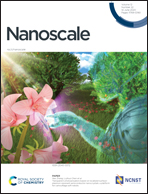Furin-instructed molecular self-assembly actuates endoplasmic reticulum stress-mediated apoptosis for cancer therapy†
Abstract
Protein quality control and proteostasis are essential to maintain cell survival as once disordered, they will trigger endoplasmic reticulum (ER) stress and even initiate apoptosis. Severe ER stress-mediated apoptosis is the cause of neurodegenerative diseases and expected to be a new target for cancer therapy. In this study, we designed a small molecule of 1-Nap to execute furin-instructed molecular self-assembly for selectively inhibiting the growth of MDA-MB-468 cells in vitro and in vivo. According to the results of transmission electron microscopy (TEM) and HPLC tracing analysis, 1-Nap is capable of self-assembling upon furin-instructed cleavage that transforms 1-Nap nanoparticles to 1-Nap nanofibers. Fluorescence imaging and Western-blot analysis results indicate that the furin-instructed self-assembly of 1-Nap rather than its ER-targeting interaction is indispensable for the ER stress and activation of apoptosis. The furin-instructed self-assembly of 1-Nap is associated with both the ER (1-Nap's targeting location) and the trans-Golgi network (furin's location); this inspired us to reasonably believe that the blocking of ER-to-Golgi traffic in the secretory pathway by molecular self-assembly may be the intrinsic motivation for controlling cell fate. This work provides a new way for the targeted disturbance of the proteostasis of cells through molecular self-assembly for developing cancer therapeutics.



 Please wait while we load your content...
Please wait while we load your content...